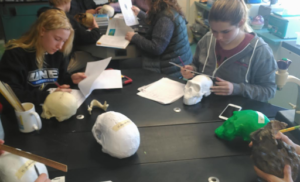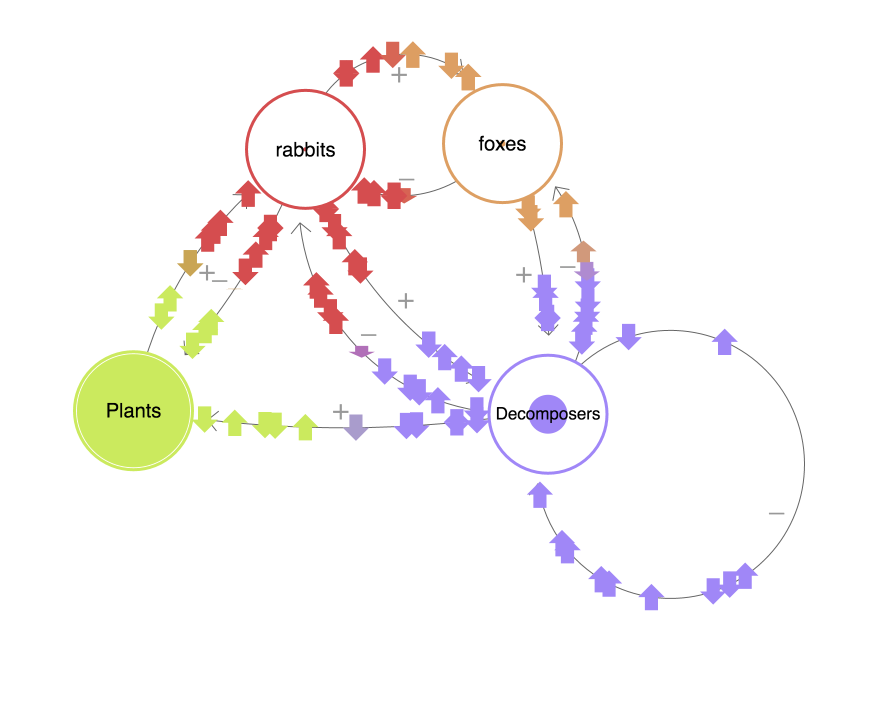By Dan Williams – Suffolk STANYS Biology SAR
A few years ago Bayer Aspirin was advertised as the “Wonder Drug that Works Wonders”, this was Bayer’s attempt to capitalize on the fact that aspirin was a lot more than just a pain medication.
The more I learn about CRISPR-Cas genome editing systems and I think about their applications in my classroom, I find myself constantly musing: CRISPR-Cas “The Wonder DNA/Enzyme system that works wonders” –I know, the catchphrase needs work.
It has been a wonder in my classroom, and my hope is that you’ll find in this essay ideas that can spark a renewed sense of wonder in your students. I offer both a set of broad interdisciplinary concepts and practical activities, starting with a view of history and ethical challenges to cutting edge science.
CRISPR stands for Clustered Regularly Interspaced Short Palindromic Repeats, sequences in the DNA of bacteria discovered by Yoshizumi Ishino of Osaka University in 1987. Twenty years later in 2007 scientists including Rodolphe Barrangou of Danisco USA, a yogurt company, demonstrated that the CRISPR sequences along with the action of Cas proteins (CRISPR Associated) act as an adaptive immune system for the bacteria against phages, viruses that kill bacteria. In 2012 Jennifer Doudna and Emmanuelle Charpentier demonstrated that this bacterial immune system can be fine-tuned for efficiency and ‘programmed’ to target most any gene of choice, opening the door for potential CRISPR-Cas genome editing. Today, that is what CRISPR is known for, genome editing and its power to change the world.
This little history lesson is actually part of the ‘wonder’ of CRISPR-Cas, consider the diversity in the previous paragraph; a DNA scientist from 1987 examining a gene sequence, a yogurt scientist twenty years later looking to keep vital strains of bacteria safe from phages and a protein scientist five years later manipulating the system in a novel way. Who would predict that their research could be related? This leads to a couple of important lessons for our Science students: one is that your research no matter how obscure today is valuable and might change the world. Two, discoveries do not happen magically like bumping one’s head and seeing the ‘flux capacitor’ but are built on previous work. Jennifer Doudna states in her book A Crack in Creation that when she was approached by Emmanuelle Charpentier about an interesting bacterial system, she had to do research to learn exactly what Dr. Charpentier was proposing. Our students today often think, they come up with a great idea and in one school year they are going to do a project that will win the Nobel prize. Worse, in our Research class culture we encourage this false narrative. Research is a journey of discovery not a race for a prize. Examination of the historical experiments that helped us get to where we are today, is an important reminder of that.
Another important part of the history lesson is to remind teachers and students of coding and Bioinformatics. If Yoshizumi Ishino did not look for unknown, or odd sequences in and around the gene he was studying, who knows when these repeats would have been discovered. Who knows what unknown or odd sequences lie in wait in genomes waiting to be discovered now? This is actually a pretty simple coding exercise; download a genome FASTA file and write a code to search for the longest repeated string, or the string repeated most often, etc. Are we teaching coding in our classrooms, or in our science labs? The history or CRISPR-Cas suggests that we should. Maybe our students can discover something big?
Likewise, how much are we teaching Bioinformatics? Barrangou’s discovery that CRISPR-Cas has adaptive immunity is an exercise in Bioinformatics; the spacer regions of the CRISPR locus are viral DNA sequences, easy enough to discover with BLAST searches. Today scientists around the world are finding new applications for CRISPR-Cas, and discovering new varieties of the system by simply examining BLAST hits and doing phylogenetic analysis. Often our students think of phylogeny as just an exam question, but it is leading to new discoveries every day. Coding and Bioinformatics are open ended discovery research, a journey into the unknown –not a eureka moment. Work like this is changing the world. Our students can be doing this work –and its free, you just need a computer! Some suggested activities are listed at the end of this article.
The history lesson is nice, but most people think of CRISPR and they want genome editing, cures for cancer or real living unicorns. That is the next area of wonder. The CRISPR-Cas system is programmable genetic engineering and surprisingly easy to model and do in the high school classroom. It is truly the ‘wonder enzyme system’ that is both simple and complex at the same time. Students can research diseases they wish to cure, or traits they want to change and design, and test a CRISPR-Cas system to investigate if it is possible. It sounds too simple and too good to be true, but you might be surprised at what can actually be done.
Using online tools completely, students can find a gene of interest (https://www.ncbi.nlm.nih.gov/), discover if it has a CRISPR-Cas locus (https://chopchop.cbu.uib.no/ ), verify off-target hits and simulate if their target was correct with in silico PCR (https://genome.ucsc.edu/). They can test any hypothesis they want to see if a CRISPR experiment is possible. Even better, if your school has the resources it can order a CRISPR-Cas system from companies like https://www.addgene.org/ and test it in a wet lab situation. Last year at Cold Spring Harbor’s scientific meeting “Genome Engineering: CRISPR Frontiers”, I learned that scientists are testing the viability of their CRISPR designs by simply ordering the system from a company like Addgene and cutting a plasmid that contains the target sequence; if the plasmid is cut, then the designed CRISPR-Cas works. It is easy enough to cut a plasmid in a classroom and run it on a gel electrophoresis as we have been doing that for years. Therefore, whether you want your students to design a virtual experiment or test a real one, CRISPR-Cas can be done in the high school laboratory.
Oh and did I forget to mention the ethical discussions that can and should arise? In designing a CRISPR-Cas experimental system like above, students should start to realize how it is not fool proof, things can go wrong. What unforeseen things could be lurking? It is one thing to be cutting a plasmid, but what if you are cutting a patient’s DNA? We know so little about our own genomes; what risks would be acceptable? What is too much? Risk is one thing for a patient who is sick and or dying, but what about gene enhancements?
The ethics of CRISPR-Cas make our GMO discussions look quaint. The promise of CRISPR-Cas is that it can make genome editing much faster, cheaper and easier than ever before. In our classrooms we should be having the discussions of the differences between therapeutic gene editing, preventative gene editing and gene insertion. Therapeutic gene editing is where one fixes a disease with a known wild type variant like sickle cell being fixed with normal hemoglobin. Preventative gene editing, proactively altering a person’s genes who has a ticking time bomb in their DNA (e.g. BRACA –breast cancer). Finally, gene insertion where novel traits are given to an organism, making a pest-resistant tomato for instance or as some would fantasize –unicorns and other mythical creatures. Of course there are many pros and cons to discuss in each instance. Like the discussion of GMO’s there are no easy answers, however these questions are going to be weighed by our society in the very near future. Our students must learn how to examine each issue with critical thinking, using evidence based justifications to form their opinions.
By now if you are still reading this you might be feeling overwhelmed, thinking to yourself that you could never do all of this. First of all, as teachers we know we can never do everything –but what makes CRISPR-Cas so wonderful is that it provides so many SOME-things that CAN be done. It is truly the wonder enzyme system that does wonders, and has so many applications in the classroom from which you can pick and choose. Students can model, design experiments, justify claims with evidence all from CRISPR-Cas.
Finally, most importantly, you do not have to invent the wheel, there are many tutorials and educational material out there. If you are looking for a great place to start, the Innovative Genomics Institute (https://innovativegenomics.org/), founded by Dr. Doudna herself, has incredible resources ready for use in the classroom and they will respond to your inquiries with answers.
In addition, I have written several activities that I am currently trying with my students and would be happy to share editable copies with anyone who asks –to try it in your own classroom, just send me an email at dan.williams@shlterisland.k12.ny.us







